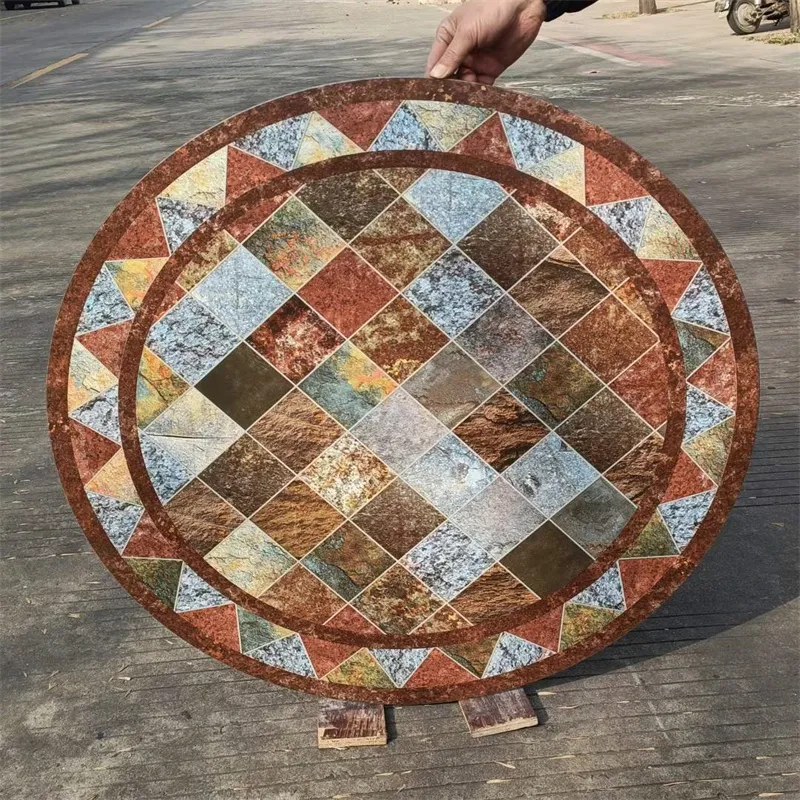Dec . 06, 2024 04:29 Back to list
what is laminated safety glass
Understanding Laminated Safety Glass
Laminated safety glass is an essential component in modern architecture and vehicle manufacturing, known for its strength, safety, and versatility. It is a type of glass that consists of two or more layers of glass, bonded together by a plastic interlayer, usually made from polyvinyl butyral (PVB) or ethylene-vinyl acetate (EVA). This unique composition not only enhances its durability but also significantly improves its safety features.
The Composition and Manufacturing Process
The production of laminated safety glass begins with the selection of high-quality glass sheets. The glass is then cleaned thoroughly to eliminate any impurities, as even small particles can affect the bonding process. The interlayer material is placed between the glass sheets, and the assembly is subjected to heat and pressure in an autoclave. This process ensures that the layers adhere firmly to one another, creating a single piece of glass that retains the transparency of regular glass while offering enhanced safety features.
Safety Features
One of the primary advantages of laminated safety glass is its ability to hold together when shattered. Unlike ordinary glass, which breaks into sharp, dangerous shards, laminated glass maintains its integrity upon impact, reducing the risk of injury. This characteristic makes it an ideal choice for a wide range of applications, particularly in environments where safety is a priority.
In vehicles, for instance, laminated safety glass is commonly used for windshields. In the event of an accident, the glass remains intact, minimizing the chances of passengers being ejected from the vehicle or suffering lacerations from flying glass. Additionally, the interlayer can absorb sound and UV radiation, providing both comfort and protection from harmful rays.
Applications
what is laminated safety glass

Laminated safety glass is used in various applications, ranging from residential and commercial buildings to automotive and aerospace industries. In architecture, it is often used for windows, skylights, and glass facades due to its aesthetic appeal and safety benefits. The ability to infuse color and decorative patterns into the interlayer further enhances its visual appeal.
In the automotive sector, laminated safety glass is not just limited to windshields; it is also used in side and rear windows to provide additional safety and structural integrity to the vehicle. Modern cars increasingly utilize laminated glass for its sound-dampening properties, creating a quieter, more comfortable ride for passengers.
The use of laminated glass extends to public spaces such as schools, hospitals, and shopping centers. Here, it serves as a barrier against crime, as the glass is more difficult to break through compared to standard glass. In high-security environments, such as banks or government buildings, laminated glass can be manufactured to meet specific threat levels.
Benefits Beyond Safety
Besides its renowned safety features, laminated safety glass offers several other benefits that make it a popular choice in various sectors. Its ability to block harmful UV rays helps to preserve interiors from fading, making it suitable for places with significant sun exposure. Furthermore, the sound insulating qualities make it an excellent choice for urban environments, providing a more peaceful indoor atmosphere.
Another significant advantage of laminated glass is its energy efficiency. By incorporating low-emissivity (Low-E) coatings, it can reduce heat transfer, thereby contributing to energy savings in buildings. This feature plays a vital role in modern architectural design, where energy conservation is increasingly vital.
Conclusion
Laminated safety glass is a testament to the advancements in material science and technology. Its exceptional safety features, combined with aesthetic flexibility and energy efficiency, make it a preferred choice across many industries. As architectural designs evolve and the demand for safety and comfort increases, laminated safety glass will undoubtedly play a critical role in shaping the future of construction, automotive design, and beyond. Whether you're considering it for your home or vehicle, understanding the benefits of laminated safety glass can lead to informed decisions that prioritize both safety and style.
-
Safety and Style with Premium Laminated Glass Solutions
NewsJun.24,2025
-
Reinvents Security with Premium Wired Glass
NewsJun.24,2025
-
Premium Float Glass Line for Modern Architecture
NewsJun.24,2025
-
Low Emissivity Glass for Energy-Efficient Architecture
NewsJun.24,2025
-
High-Performance Insulated Glass Solutions for Modern Architecture
NewsJun.24,2025
-
Elevates Interior Style with Premium Silver Mirror
NewsJun.24,2025
Related PRODUCTS














